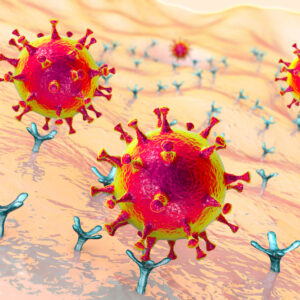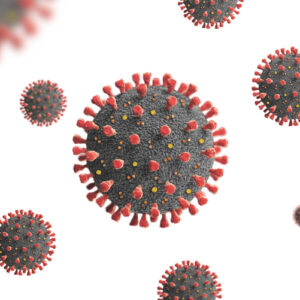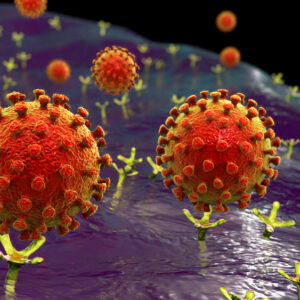Coronavirus Receptors
The Native Antigen Company manufacturers highly purified virus-host cell receptors using state-of-the-art expression and purification techniques. On request we can also undertake custom preparation of recombinant and native proteins for a broad range of disease states.
Coronavirus Receptors Background
Coronaviruses primarily infect the upper respiratory and gastrointestinal tract of mammals and birds. Six different currently known strains of coronaviruses infect humans and they are believed to cause a significant percentage of all common colds in human adults and children. Coronaviruses can also cause more serious diseases including severe acute respiratory syndrome (SARS), a viral respiratory disease of zoonotic origin caused by the SARS coronavirus (SARS-CoV). Between November 2002 and July 2003, an outbreak of SARS in southern China resulted in an eventual 8,098 cases, resulting in 774 deaths across 37 countries.
Coronaviruses are enveloped viruses with a positive-sense single-stranded RNA genome and with a nucleocapsid of helical symmetry. The genomic size of coronaviruses ranges from approximately 26 to 32 kilobases, the largest for an RNA virus. They can be classified into at least three major genera, α, β, and γ (formerly group 1, 2, and 3, respectively). Prototypic β-genus coronaviruses include severe acute respiratory syndrome coronavirus (SARS-CoV) and Middle East respiratory syndrome coronavirus (MERS-CoV).
The virus obtained its name from the characteristic halo appearance of virions under electron microscopy with a fringe of large, bulbous surface projections comprising the viral spike (S) peplomers, which are proteins that populate the surface of the virus and determine host tropism. Other structural proteins of coronaviruses are the envelope (E), membrane (M) and nucleocapsid (N).
The envelope-anchored spike protein mediates coronavirus entry into host cells by first binding to a receptor on the host cell surface and then fusing viral and host membranes. In the specific case of the SARS coronavirus, a defined receptor-binding domain on S mediates the attachment of the virus to its cellular receptor, angiotensin-converting enzyme 2 (ACE2). Some coronaviruses (specifically the members of Betacoronavirus subgroup A) also have a shorter spike-like protein called hemagglutinin esterase (HE).
Coronaviruses recognize a variety of host receptors, for example, although HCoV-NL63 and SARS-CoV belong to the α-genus and β-genus, respectively, their S1-CTDs recognize the same receptor, angiotensin-converting enzyme 2 (ACE2). Therefore, Coronaviruses have evolved a complex receptor recognition pattern: (i) coronaviruses use one or both S1 domains as RBDs; (ii) highly similar coronavirus S1-CTDs within the same genus can recognize different protein receptors, whereas very different coronavirus S1-CTDs from different genera can recognize the same protein receptor; and (iii) coronavirus S1-NTDs can recognize either protein or sugar receptors.
References
- Bosch et al. (2003). The coronavirus spike protein is a class I virus fusion protein: Structural and functional characterization of the fusion core complex. J Virol 77:8801–8811.
- de Groot et al. (2011). Family Coronaviridae. In AMQ King, E Lefkowitz, MJ Adams, EB Carstens (eds.). Ninth Report of the International Committee on Taxonomy of Viruses. Elsevier, Oxford. pp. 806–828.
- González et al. (2003). A comparative sequence analysis to revise the current taxonomy of the family Coronaviridae. Arch Virol 148:2207–2235.
- Li et al. (2005). Structure of SARS coronavirus spike receptor-binding domain complexed with receptor. Science. 309 (5742): 1864–8.
- Li et al. (2015). Receptor Recognition Mechanisms of Coronaviruses: a Decade of Structural Studies. J. Virol. 89:4
- Spaan et al. (1988). Coronaviruses: structure and genome expression. J Gen Virol 69(Pt 12):2939–2952
- Summary of probable SARS cases with onset of illness from 1 November 2002 to 31 July 2003. World Health Organization (WHO). 31 October 2008.
Coronavirus Receptors
We have manufactured different virus receptor proteins, including the coronavirus receptor offered here. Our recombinant proteins are produced to the highest quality, using in-house bespoke expression and purification methods.
Questions?
Check out our FAQ section for answers to the most frequently asked questions about our website and company.



